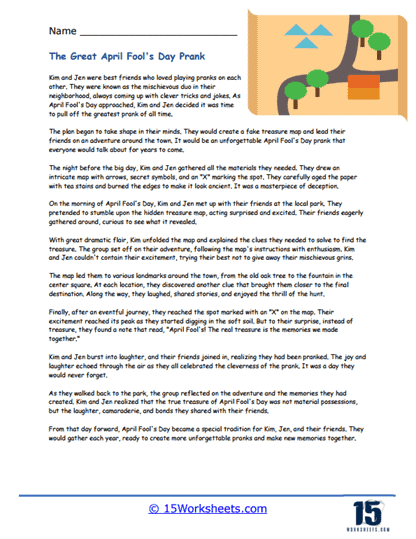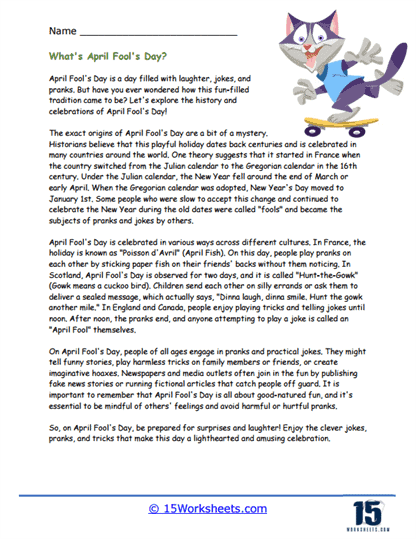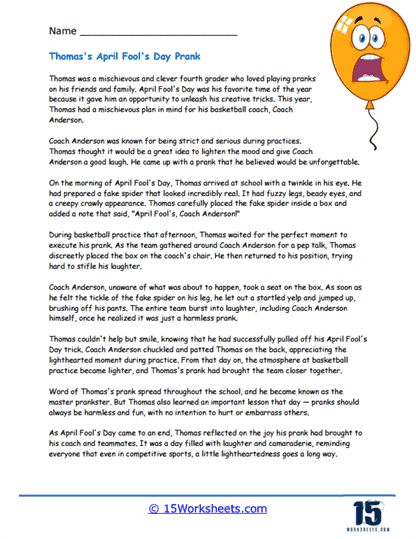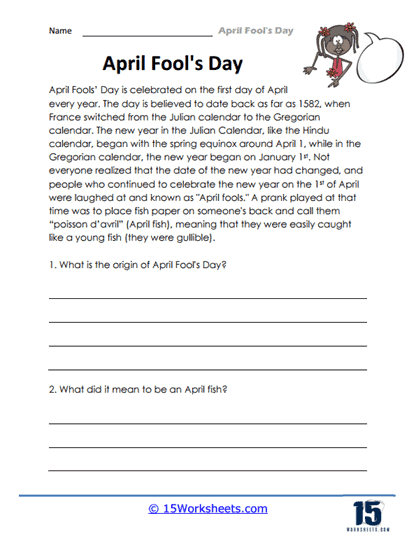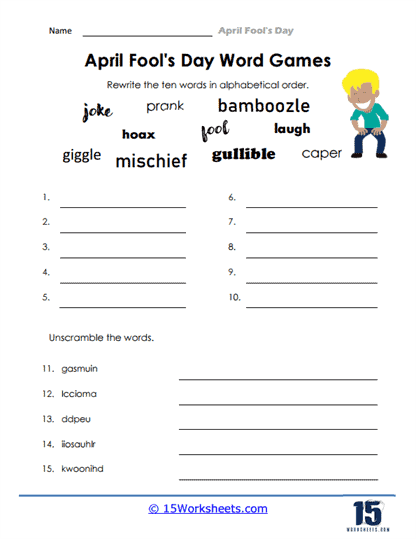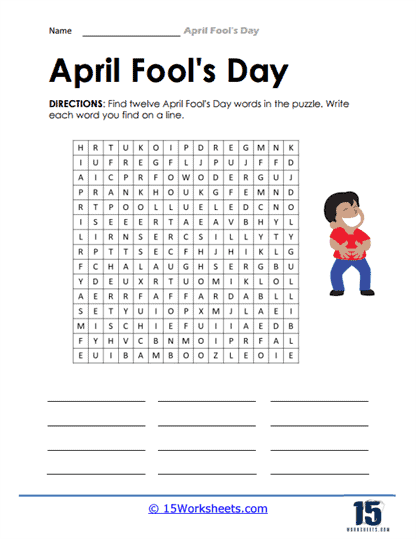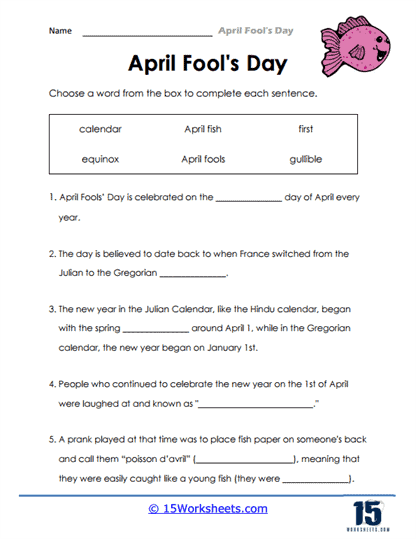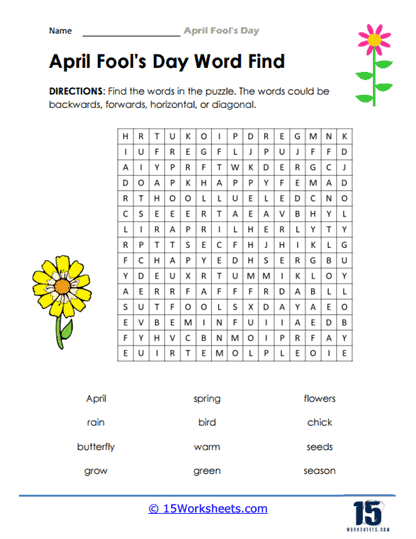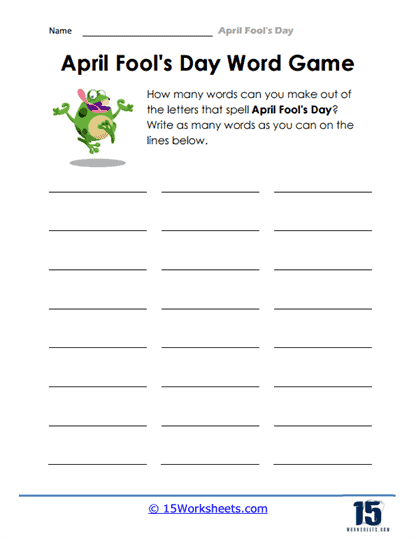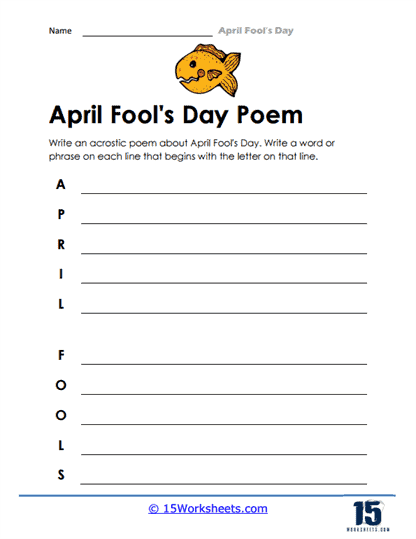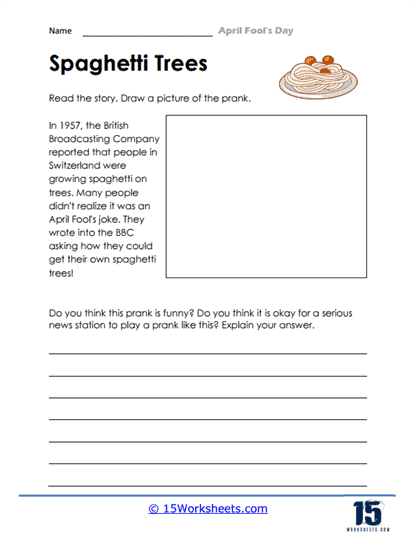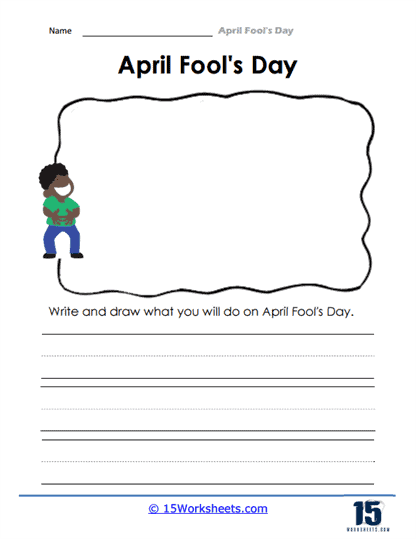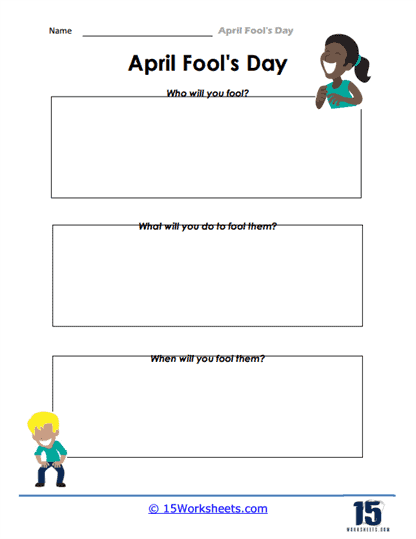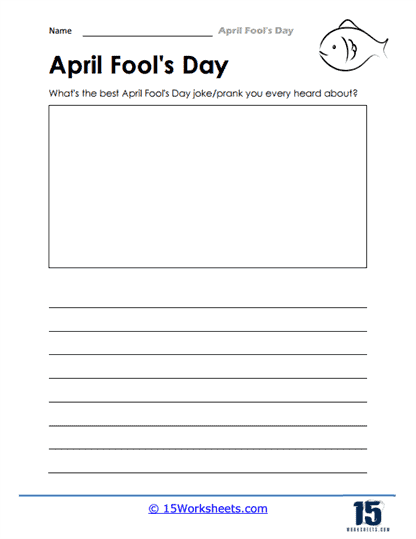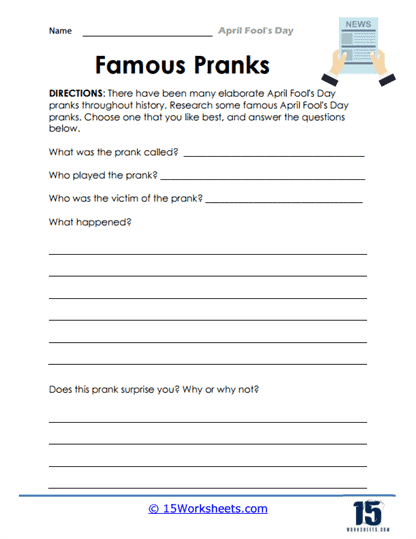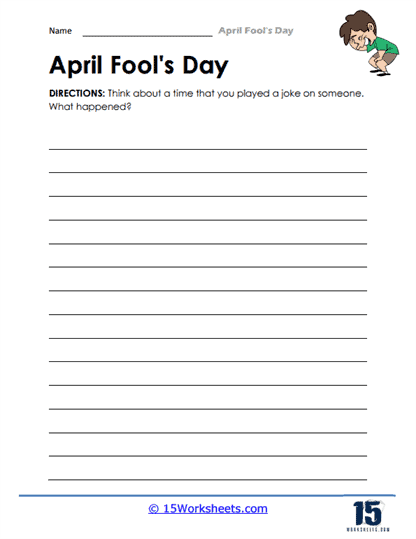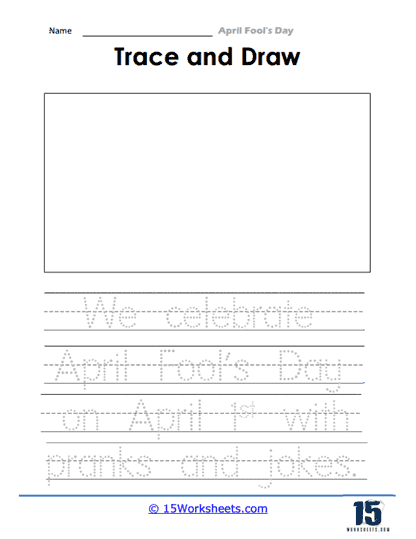April Fool's Day Worksheets
All About These 15 Worksheets
This engaging set of worksheets offers students a unique opportunity to combine learning with laughter. Carefully designed to celebrate the playful nature of this lighthearted holiday, the activities go beyond simple fun-they also promote critical thinking, creativity, and meaningful reflection. By exploring the history, traditions, and humor behind April Fool’s Day, students not only enjoy the festivities but also develop key academic and life skills in the process.
After working through this series, students will:
1. Discover the History and Legends of April Fool’s Day
Students will explore how April Fool’s Day began, tracing its roots through historical events and cultural traditions. They’ll read about famous pranks from the past-some clever, some bizarre-and reflect on how humor has evolved over time. By connecting to real historical examples, students gain context for the holiday and see how even silliness can have a story worth telling.
2. Expand Their Holiday-Themed Vocabulary
Through word lists, matching activities, and vocabulary games, students will learn new terms related to April Fool’s Day-words like “hoax,” “gag,” “mischief,” and “trickster.” These lessons help build a richer vocabulary, while also giving students the language they need to describe playful scenarios, express humor in writing, and discuss different forms of joking appropriately.
3. Strengthen Writing and Imagination with Creative Prompts
Several worksheets invite students to dive into creative writing by imagining their own April Fool’s pranks or crafting fictional stories about trick-filled adventures. These prompts encourage originality and humor while reinforcing grammar, narrative structure, and character development. Students learn that writing can be both expressive and entertaining.
4. Develop Critical Thinking and Ethical Reasoning
Planning a harmless prank might seem like just a fun exercise, but it also calls for strategic thinking, empathy, and creativity. Students are encouraged to think through the who, what, when, and why of a prank-while also reflecting on what makes a joke fun rather than hurtful. These activities spark important conversations about intention, boundaries, and good-natured fun.
5. Reflect on Personal Experiences
By writing about or discussing past April Fool’s Day memories-whether they’ve been the prankster or the unsuspecting target-students practice self-reflection and storytelling. This not only builds communication skills but also allows them to connect personally to the material and share laughter and stories with peers.
What is April Fool’s Day?
April Fools’ Day, also known as All Fools’ Day, is an annual event celebrated on April 1st. It is a day marked by light-hearted humor, practical jokes, and harmless pranks. People often try to fool their friends, family, and coworkers by playing tricks on them and then exclaiming “April Fools!” after successfully pulling off the prank.
The origins of April Fools’ Day are uncertain, but it is believed to date back to ancient Roman festivals like Hilaria, which was celebrated on March 25th, or the medieval Feast of Fools. Some historians also link the tradition to the adoption of the Gregorian calendar in 1582, when New Year’s Day was moved from the end of March to January 1st. Those who continued to celebrate the New Year in late March or early April were considered “fools” and became the target of jokes.
April Fools’ Day has evolved over time, with various cultures and countries developing their own unique ways of celebrating the day. In some places, the pranks and jokes are restricted to the morning hours, while in others, they can last the entire day. While most jokes are meant to be harmless and fun, it is important to be mindful of the potential impact on others and to avoid pranks that could be harmful or offensive.
Celebrating April Fools’ Day in the Classroom
April Fools’ Day offers a unique opportunity to create a classroom environment filled with laughter, imagination, and learning. When thoughtfully guided, this playful day can help students sharpen their creativity, build positive social interactions, and practice critical thinking-all while having fun. These activities are designed to be age-appropriate, respectful, and inclusive, ensuring that every student feels safe, seen, and celebrated. Here’s a deeper look at what students will gain from each suggested activity:
1. Setting Expectations
Before the fun begins, students will learn about the history and purpose of April Fools’ Day, discovering how humor and tradition have evolved around the world. By discussing what makes a joke funny versus harmful, they’ll practice empathy, boundaries, and respectful communication. These conversations help students understand that kindness and inclusion are essential parts of good-natured humor.
2. Sharing Harmless Pranks
When students share their favorite harmless pranks, they’re not only tapping into creative storytelling-they’re also learning to evaluate humor through a social-emotional lens. By describing or acting out jokes within a respectful framework, students build public speaking skills, learn to consider the feelings of others, and enjoy a lighthearted space where everyone is included in the fun.
3. Classroom Surprises
Surprises like a “fake” pop quiz or a mixed-up classroom setup spark curiosity and flexibility, helping students become comfortable with unexpected changes. These moments break the routine in a safe way, reinforcing that learning can be joyful and that laughter can be a powerful bonding experience.
4. Creative Writing Prompts
Writing stories about pranksters, mishaps, or silly scenarios gives students a chance to explore voice, tone, and perspective in their writing. These prompts encourage imaginative storytelling, narrative structure, and the playful use of language-all while connecting students to the shared joy of storytelling.
5. Brainstorming Harmless Pranks
Through group brainstorming, students will practice collaborative thinking, idea generation, and critical evaluation. They’ll work together to come up with pranks that are fun, safe, and thoughtful-developing skills in ethical reasoning and teamwork in the process.
6. April Fools’ Trivia
A trivia quiz on the history and global traditions of April Fools’ Day turns learning into a game. Students will build background knowledge, improve listening and recall skills, and gain appreciation for how different cultures celebrate humor.
7. Joke and Riddle Sharing
Taking turns to share jokes, riddles, or funny stories helps students develop confidence, timing, and verbal fluency, while also strengthening peer relationships. Laughter becomes a bridge for building community and celebrating each other’s personalities.
8. April Fools’ Art Projects
By designing cards, posters, or comic strips, students get to translate humor into visual expression. This boosts creativity, fine motor skills, and visual storytelling, while encouraging individuality and a playful approach to art.
9. Role-Playing and Skits
When students create and perform skits featuring pranks or misunderstandings, they practice collaboration, scriptwriting, body language, and audience awareness. It’s a fun way to combine humor with performance, and it helps students take social risks in a supportive, laughter-filled environment.
Ultimately, celebrating April Fools’ Day in the classroom is about more than tricks and giggles-it’s a chance to teach students how to use humor thoughtfully, communicate effectively, and build joyful community connections. When approached with care, this holiday becomes a meaningful moment to blend learning with laughter, and to remind students that school can be both a place of knowledge and a space for play.

